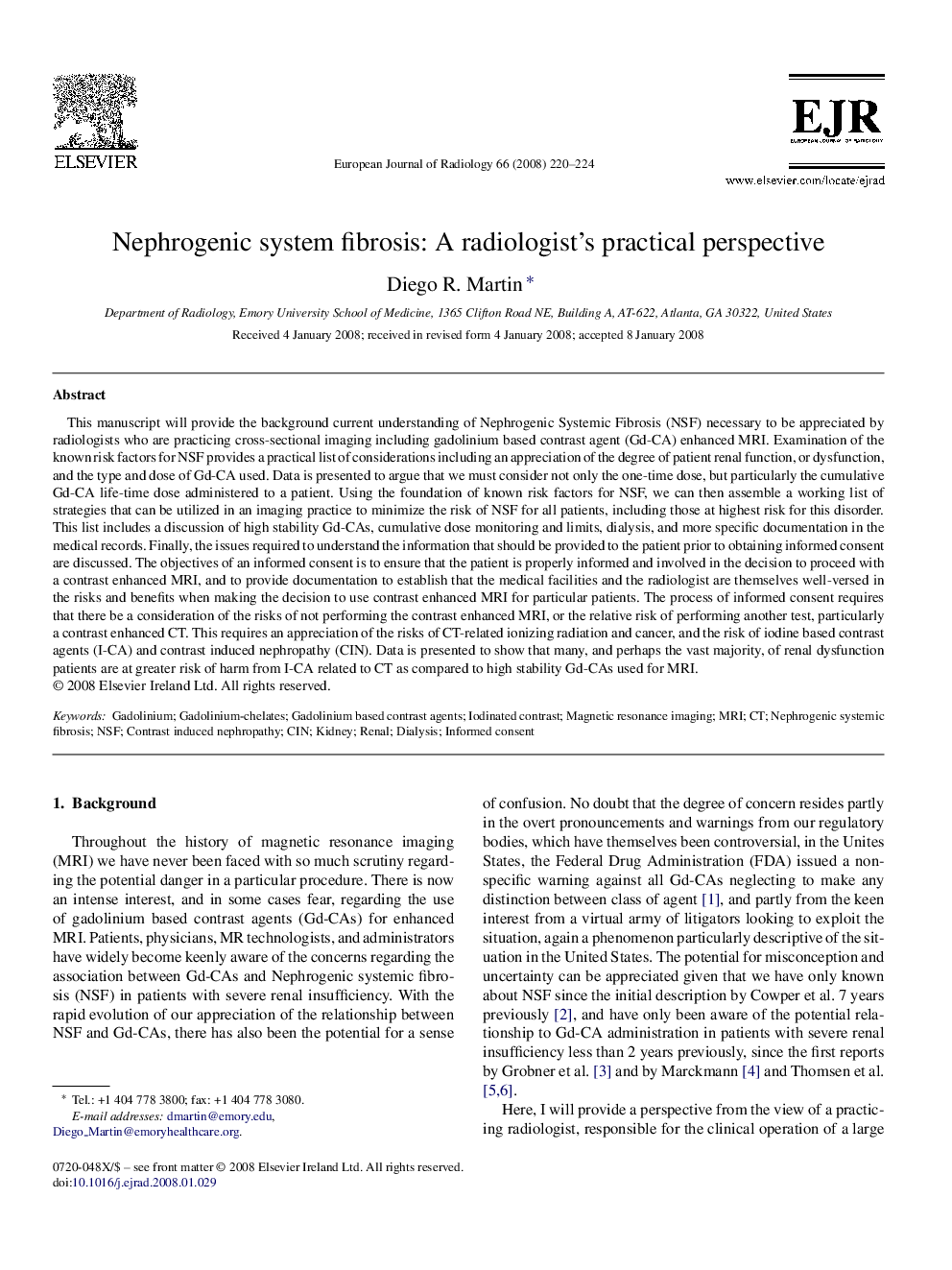| کد مقاله | کد نشریه | سال انتشار | مقاله انگلیسی | نسخه تمام متن |
|---|---|---|---|---|
| 4228016 | 1609840 | 2008 | 5 صفحه PDF | دانلود رایگان |

This manuscript will provide the background current understanding of Nephrogenic Systemic Fibrosis (NSF) necessary to be appreciated by radiologists who are practicing cross-sectional imaging including gadolinium based contrast agent (Gd-CA) enhanced MRI. Examination of the known risk factors for NSF provides a practical list of considerations including an appreciation of the degree of patient renal function, or dysfunction, and the type and dose of Gd-CA used. Data is presented to argue that we must consider not only the one-time dose, but particularly the cumulative Gd-CA life-time dose administered to a patient. Using the foundation of known risk factors for NSF, we can then assemble a working list of strategies that can be utilized in an imaging practice to minimize the risk of NSF for all patients, including those at highest risk for this disorder. This list includes a discussion of high stability Gd-CAs, cumulative dose monitoring and limits, dialysis, and more specific documentation in the medical records. Finally, the issues required to understand the information that should be provided to the patient prior to obtaining informed consent are discussed. The objectives of an informed consent is to ensure that the patient is properly informed and involved in the decision to proceed with a contrast enhanced MRI, and to provide documentation to establish that the medical facilities and the radiologist are themselves well-versed in the risks and benefits when making the decision to use contrast enhanced MRI for particular patients. The process of informed consent requires that there be a consideration of the risks of not performing the contrast enhanced MRI, or the relative risk of performing another test, particularly a contrast enhanced CT. This requires an appreciation of the risks of CT-related ionizing radiation and cancer, and the risk of iodine based contrast agents (I-CA) and contrast induced nephropathy (CIN). Data is presented to show that many, and perhaps the vast majority, of renal dysfunction patients are at greater risk of harm from I-CA related to CT as compared to high stability Gd-CAs used for MRI.
Journal: European Journal of Radiology - Volume 66, Issue 2, May 2008, Pages 220–224